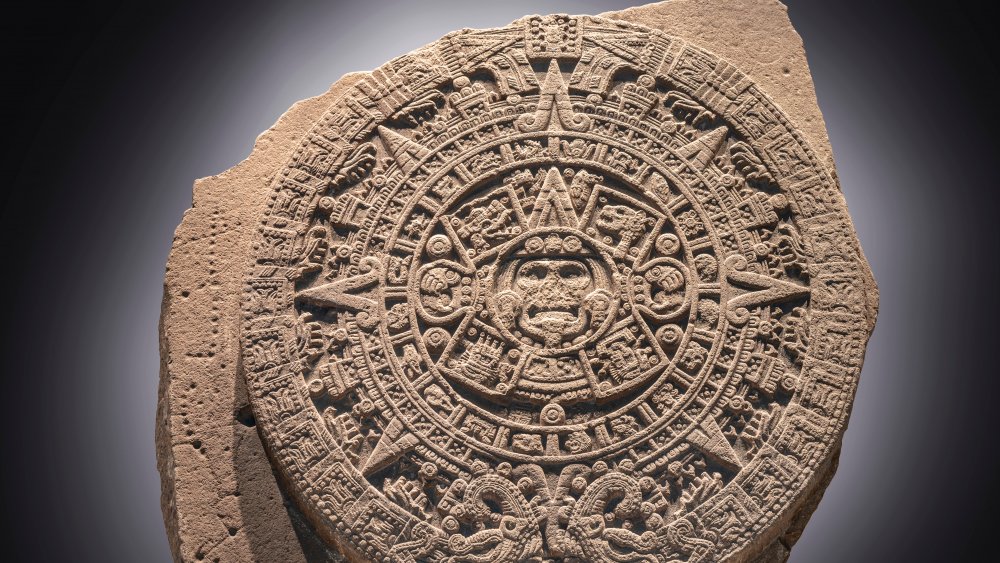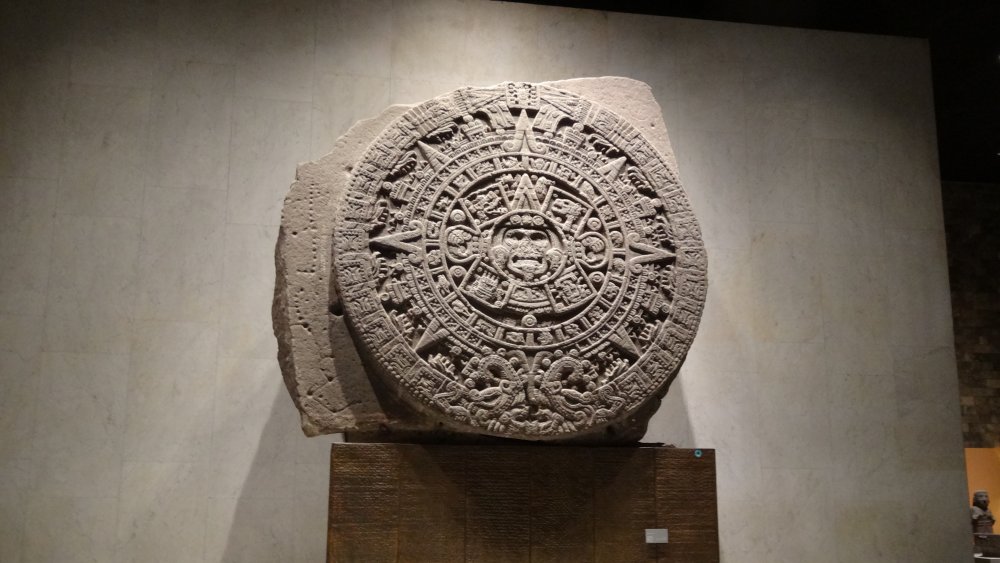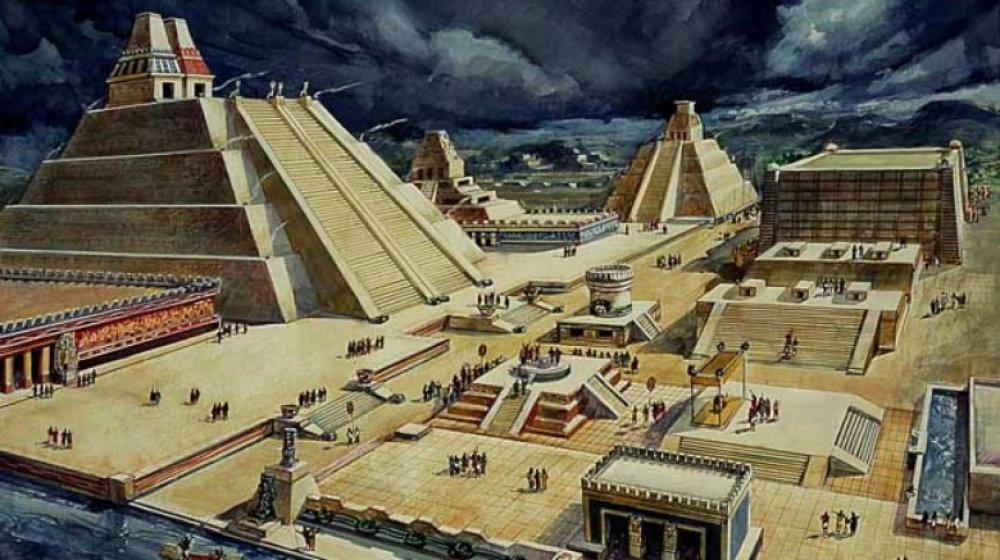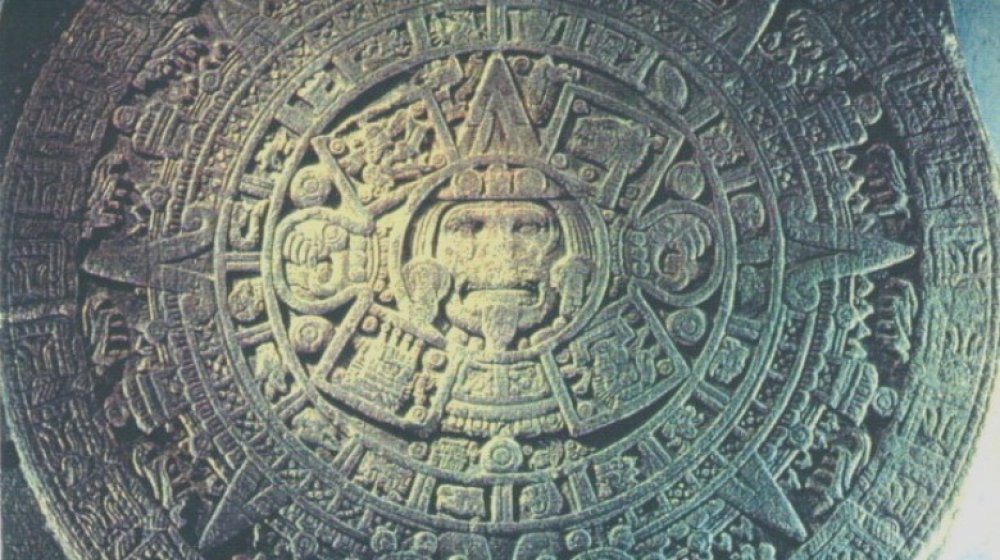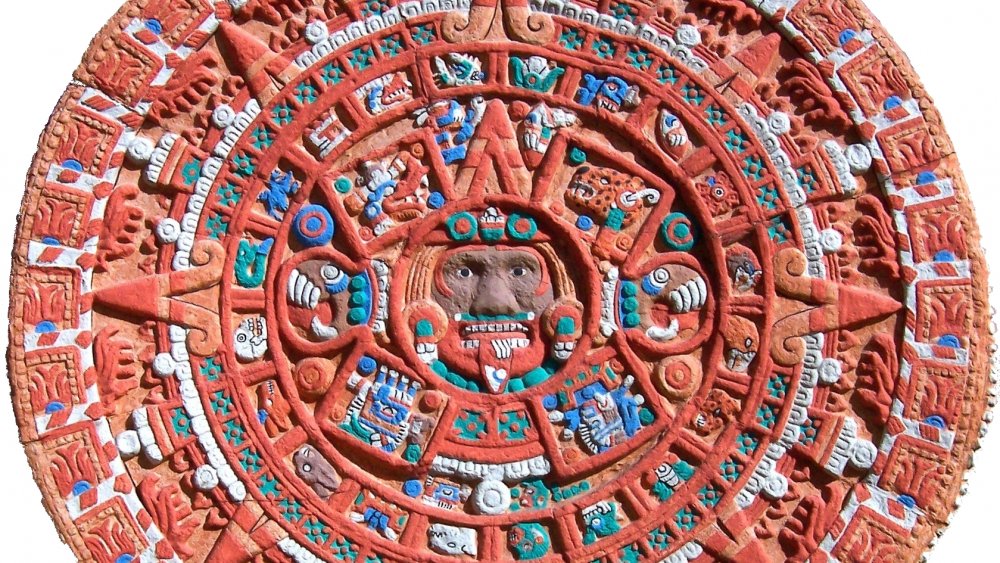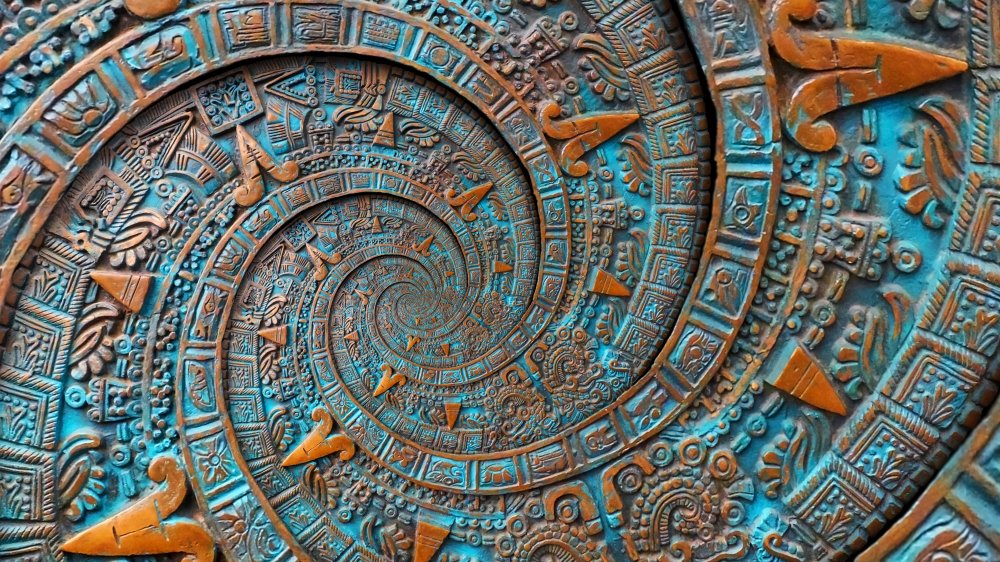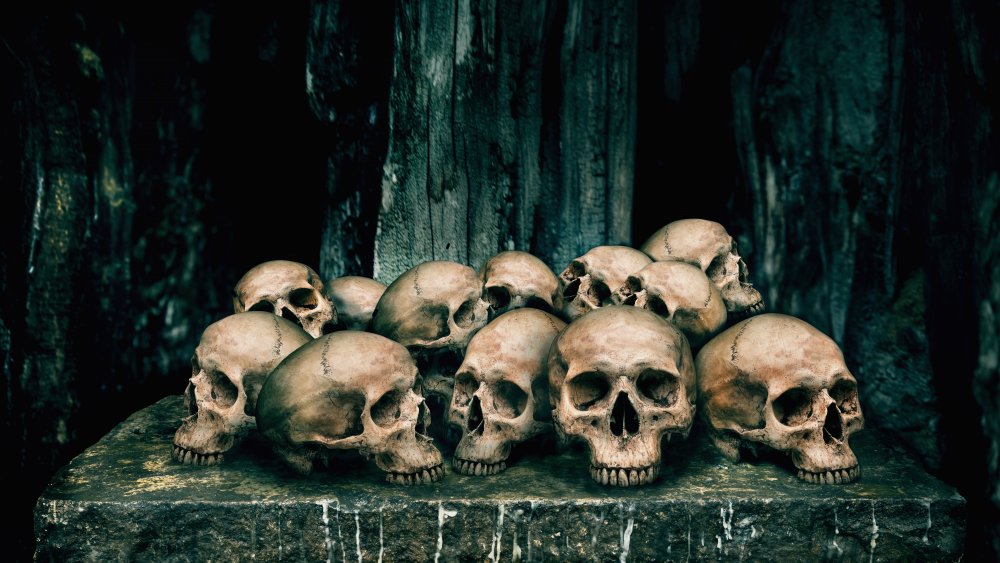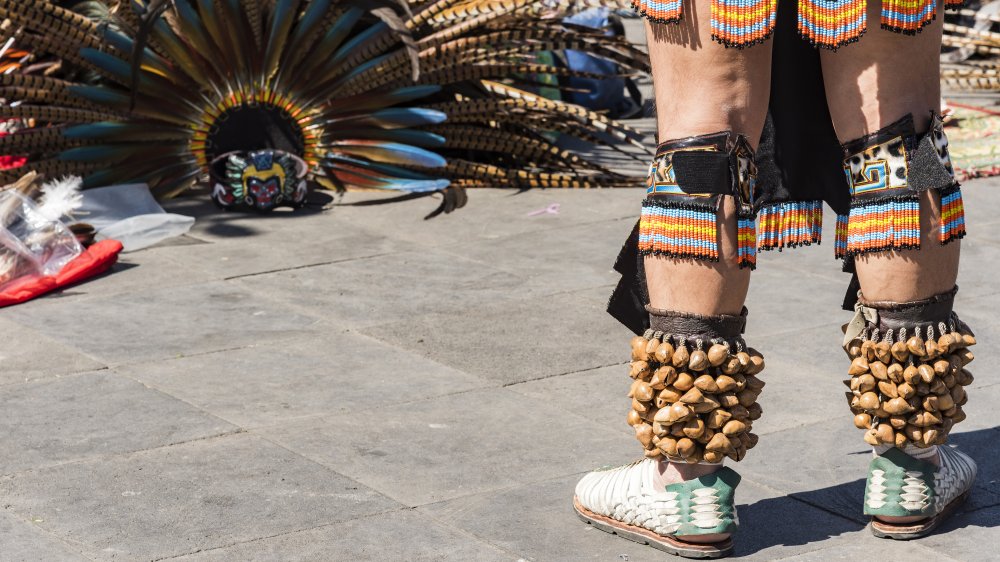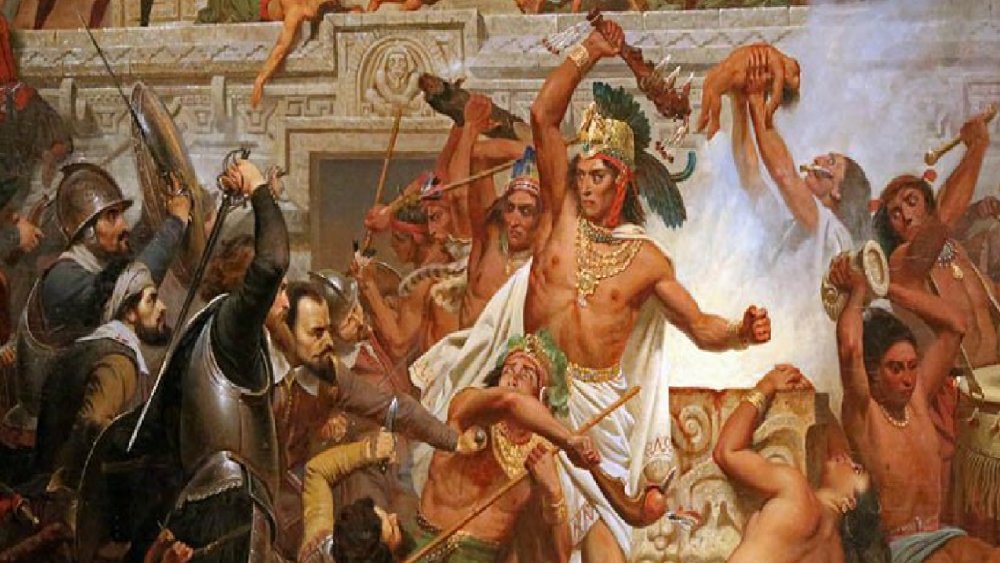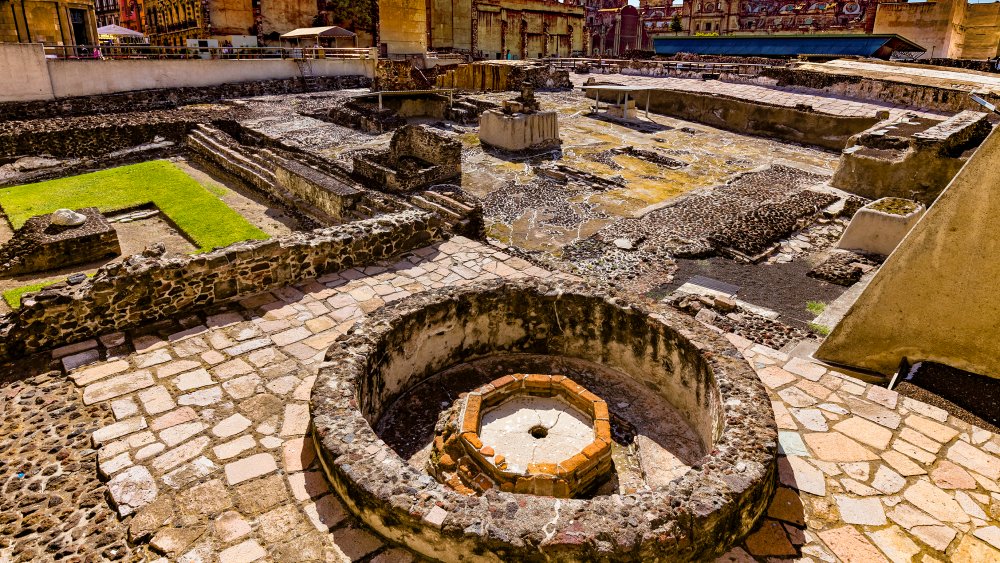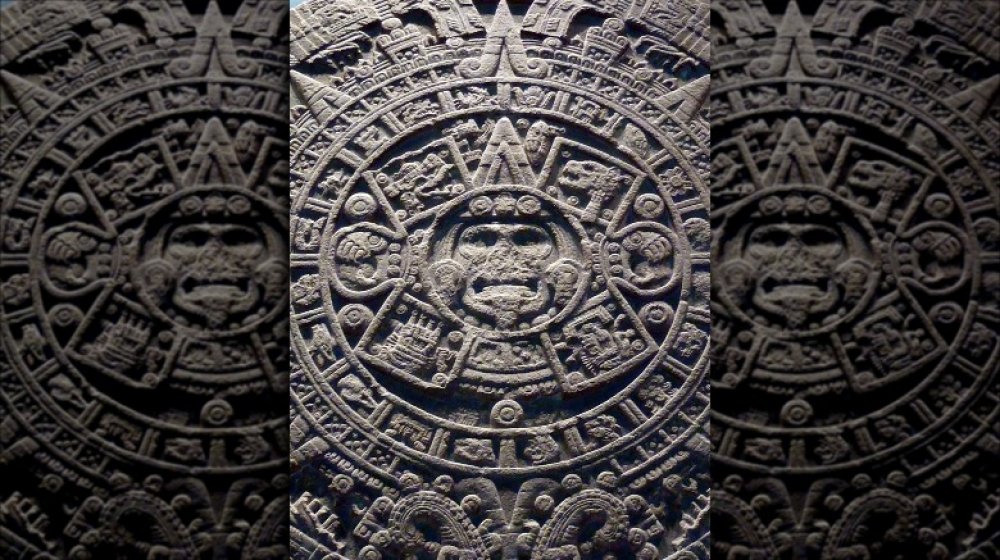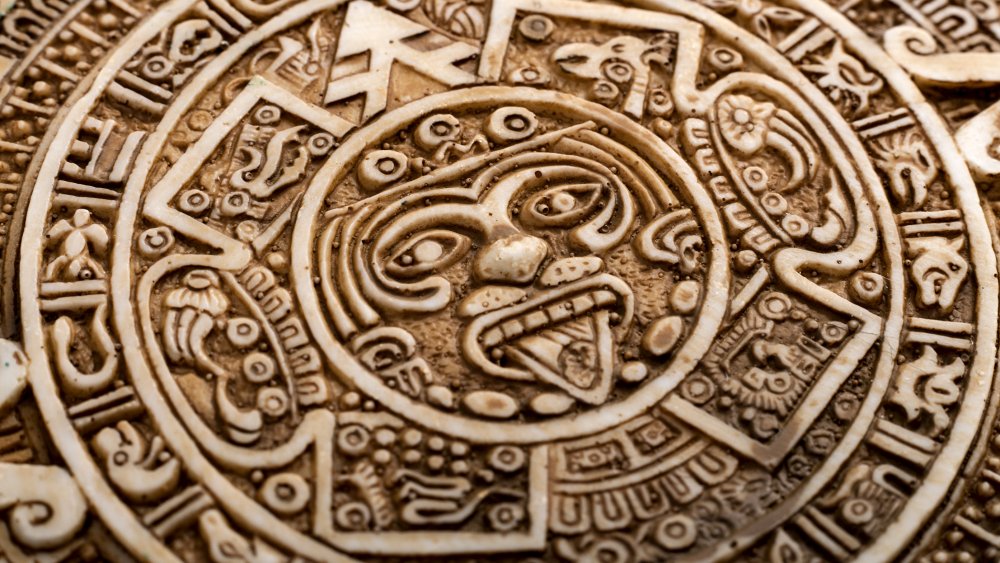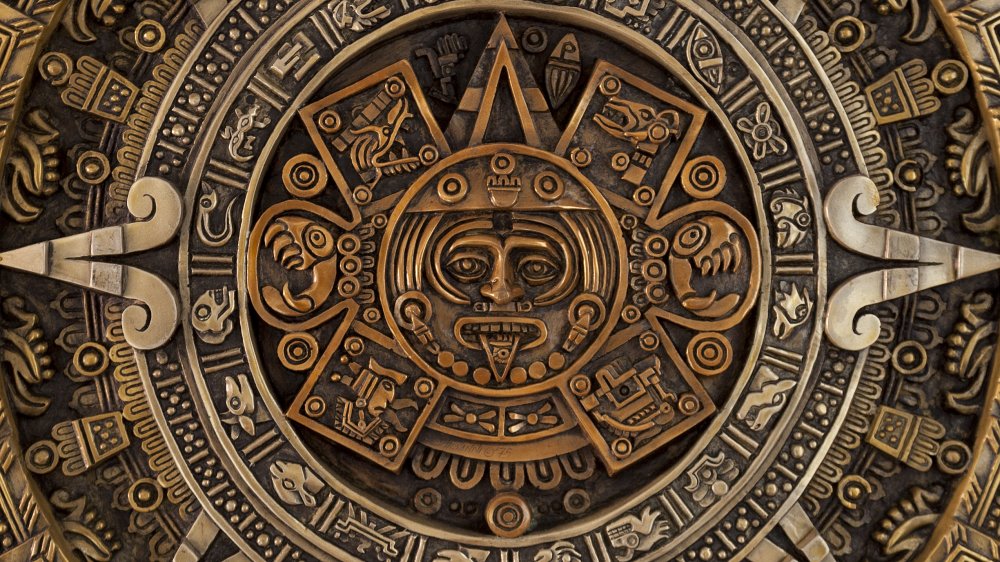The Mysterious Aztec Sun Stone Explained
Pyramids, winged serpents, stone basins meant to hold beating human hearts — the Aztec civilization produced some pretty dang impressive artifacts. One of the most recognizable, but least understood, is the jaw-dropping Aztec Sun Stone.
Even though Westerners have known about the stone since 1519, do we really understand what it was used for? Over the centuries, scholars, writers, crackpot theorists, and the average Joe on the street have suggested that it might be anything from a calendar to a political statement. It may even be a warning about the impending end of the universe.
Is the mysterious carved stone slab tantalizingly out of reach to our point of view, locked away behind the bars of history, language, culture, and that whole pesky "wiping out the civilization that created it" thing? One thing is for sure: the pull of 25 tons of heavily carved, monster-laden stone makes an impression you'll never forget.
What Is the Aztec Sun Stone?
The Aztec Sun Stone — also known as the Calendar Stone or, in Spanish, the Piedra del Sol — is a 25-ton basalt stone monument carved in bas relief. The Ancient History Encyclopedia tells us it's a whopping 12 feet in diameter and over 3 feet thick.
We don't know exactly when it was carved, with some scholars, like those at Aztec-History.com, estimating a date in the late 1400s and others, like the folks at Inside-Mexico.com, placing its creation closer to 1512. That's because the stone contains two conflicting time references — one to the Aztec date of 13 Reed, which is our year 1479 C.E., and another to the reign of the emperor who commissioned the stone, Moctezuma II, who didn't take the throne until 1502.
13 Reed was an important religious date for the Aztecs. Emperor Moctezuma probably wanted to link his own power to the spiritual rebirth of the sun god that was supposed to have happened on that date. Regardless, we know the stone was finished sometime before 1521, when the Spanish turned up and, well, kinda gave the locals something more to worry about than making mysterious giant stone sculptures.
Who made the Aztec Sun Stone?
The Sun Stone was created by the Mexica people of northern and central Mexico, rulers of the vast Aztec Empire that thrived from around 1345 through 1521 C.E.
According to Ancient History Encyclopedia, the empire grew out of a series of wars between rival city-states starting in the 1100s, with three gaining dominance in the so-called Triple Alliance: Tenochtitlan, Texcoco, and Tlacopan. Stretching from coast to coast in central and northern Mexico, the empire was huge and initially unruly, but it was eventually brought together by strong "high kings" in the central capital of Tenochtitlan, today's Mexico City. At its height, as History tells us, the empire contained more than five million people, and Tenochtitlan alone was a bustling metropolis of over 140,000.
It was at this peak of power that the Mexica, the ruling nation, created their greatest monuments — a series of massive pyramids, temples, sculptures, and other artifacts that included the Sun Stone. Science relates that the Templo Mayor, the most important Aztec temple, was built in five phases, with the last one corresponding to when we think the Sun Stone was carved. According to archaeologist David Stuart, the new emperor, Moctezuma II, probably wanted to show off his wealth and power as well as link himself to the hugely important god of sun and war, Huitzilopochtli, and would have used the impressive stone as a centerpiece of the new temple renovations.
What's on the Aztec Sun Stone?
The Sun Stone is an incredibly complicated piece of iconography, using glyphs from the Aztec timekeeping system as well as depictions of gods and mythological events. The Aztec calendar was amazingly sophisticated, much like that of the ancient Maya. It consisted of interlocking wheels of time aligned with cardinal directions, seasons, colors, gods, and so on. As Encyclopedia Britannica explains, there were 20 "day signs" that cycled through 13 numbers, roughly equivalent to our "weeks" and "months." All of these added up to a 52-year cycle that was central to the Aztec religion.
The Sun Stone contains all this and more. Around a central image of a knife-tongued entity, in addition to the calendar glyphs, there are concentric circles of carvings depicting epic battles and legendary monsters like fire serpents. The History Blog notes that the carvings seem to show four previous eras, placing the Sun Stone squarely at the start of the fifth, which the date 13 Reed marks as starting in 1479.
There's massive debate about that central face — the one clutching a bloody human heart. Since at least 1904, archaeologists like Eduard Seler figured it was Tonatiuh, a sun deity. In the 1970s, according to ThoughtCo, some renegades suggested it might instead be the animate earth or the god of the night. More recently, Professor David Stuart of the University of Texas has interpreted our grinning, creepy, heart-eating friend as being Emperor Moctezuma II himself.
What did the Aztec Sun Stone originally look like?
We know from firsthand accounts and from later analysis starting in the 1930s that the Sun Stone was originally painted in bright colors. Color historian Dr. Élodie Dupey García goes into detail on how the vibrant, impressive painting would have been done, and The History Blog says it would have shone with intense reds, blues, and yellows. The colors wore off with use and time, leaving the weathered stone we know today. Most scholars think the stone originally lay flat on or near the Templo Mayor, and prominent archaeologists like Felipe Solis Olguin suspect that it was used as a sacrificial altar, with priests performing human sacrifices to mark major celestial events — like that 52-year cycle ending in 1479.
All that probably took its toll on the paint and even on the stone itself. As The History Blog notes, the stone developed a crack at some point and was eventually flipped upright into the position it was in when the first Spaniards in Tenochtitlan saw it. As researcher Khristaan Villela tells us, an early Dominican friar, Diego Durán, wrote of seeing a massive circular stone tablet in the Zocalo, the city's main square, that could only have been the Sun Stone.
Was the Aztec Sun Stone a calendar?
From the first time Westerners laid eyes on the Sun Stone, they thought it was some sort of calendar, an idea that persists today. It does include many glyphs used in the Aztec timekeeping system and may have something to do with either an important date or mapping out a certain era according to the Aztec idea of time. Encyclopedia Britannica notes that the central panel of the Sun Stone holds the character for 4 Ollin (Movement), the date in Fifth Era when the world would be destroyed by earthquakes. Other glyphs on the stone mark the ends of the four previous eras: 4 Tiger, 4 Wind, 4 Rain, and 4 Water.
In 1792, Mexican scholar Antonio Leon y Gama published a book about the Sun Stone in which he claimed it was a massive sundial and suggested that it might also be used to track solstices, equinoxes, and other celestial events. That also backs up the possibility, discussed by researcher Susan Milbrath, that the Sun Stone might have commemorated an important eclipse. Cycles of the sun, moon, and planets were hugely important to the Aztecs, and a big eclipse might have been linked to any number of sacrifices and rituals.
So while the Sun Stone probably had something to do with astronomy and important events, it wasn't a calendar the way we think of it, where you'd look to see what day it was. It was more like a gigantic framed page from that calendar, marking some significant anniversary.
Was the Aztec Sun Stone used for human sacrifice?
Yes, the Aztecs sacrificed humans. A lot of humans, according to most researchers, as Science magazine discusses. Like, thousands. And yep, many of them were killed on top of the Templo Mayor in central Tenochtitlan. Being sacrificed was actually a huge honor, as human sacrifice was thought to nourish the gods. Without it, the sun wouldn't rise. That's one reason why some scholars, starting with Alfredo Chavaro in the 1870s, think the Sun Stone was originally positioned flat on top of the Aztecs' most important temple and used for either ritual combat or for human sacrifice, says researcher Khristaan Villela, writing at Mexicolore. Blood from victims would have "fed" the central sun god image, keeping the world running.
And that was particularly important in terms of celestial events, bringing together the "calendar" and "sacrificial altar" theories about the Sun Stone. The Florida Museum says that the Aztecs probably held a particularly huge sacrifice every 260 days, on the day 4 Ollin, to make sure the sun would rise the next day and the world wouldn't go the way of the previous four eras, ending in massive destruction. Granted, it was supposed to start up again after that, but who wants to take chances when you can just kill some captives instead?
Was the Aztec Sun Stone a political monument?
Some archaeologists think the Sun Stone was actually a political monument meant to mark a new emperor and forge a symbolic relationship between that ruler and the gods.
While researchers have established that the key date inscribed into the Sun Stone is 1479 C.E., it is believed that the stone was commissioned later by Moctezuma II, who didn't take the throne until 1502, per ThoughtCo. Given that conquistador Hernán Cortés turned up in Tenochtitlan on November 8, 1519, according to Encyclopedia Britannica, and Moctezuma's successor surrendered on August 13, 1521, we can be pretty sure it was completed before 1519 ... assuming it was technically completed at all.
After all, similar stones commissioned by previous rulers like Moctezuma I had massive carvings on their sides, too, and were almost guaranteed to do double duty as ceremonial altars and political monuments, as Khristaan Villela relates. We have no clue why the Sun Stone doesn't follow that template, other than maybe the basalt chosen was lousy quality, as suggested by German writer Hermann Beyer as far back as 1921 and referred to by Villela and Mary Ellen Miller in their book The Aztec Calendar Stone. More recently, art historians like David Stuart have suggested that the stone was primarily a political monument celebrating the new emperor and wasn't meant for heavy-duty sacrifice at all, perhaps showing that the Aztecs were rethinking some of their practices.
What happened to the Aztec Sun Stone after the Spanish Conquest?
When the Spanish conquistadors invaded Mexico in the 1500s, they found several vast and powerful cultures already there, including the Aztecs. In their central city, Tenochtitlan, lay the Sun Stone. After the Spaniards conquered Mexico, they brutally suppressed the Aztec religion.
At first, according to Inside-Mexico.com, the stone was just kind of ignored and left to the elements near the new Viceregal Palace. It might have been too big to do anything about, or maybe the Spaniards just liked having something cool to look at. Period observers like Diego Durán were certainly impressed — he wrote one of the earliest books on the Aztecs, The History of the Indies of New Spain, in which he mentions massive stone sculptures like (and probably including) the Sun Stone a few times.
But the fascination didn't last long. As The History Blog tells us, the second archbishop of Mexico, Archbishop Alonso de Montúfar, considered the Sun Stone a demonic influence and ordered it flipped upside down and buried in the Zocalo, Tenochtitlan's central square. The suppression campaign was super-successful: As an article archived from Mesoweb (in Spanish) notes, after the stone was buried in the mid-1500s, it was completely forgotten about for more than 200 years.
Playing lost and found with the Aztec Sun Stone
The Sun Stone was well-known during the Aztec period but was buried — literally — by the Spanish when they conquered the region in the 1500s. It wasn't discovered again until 1790, when the massive main square of Mexico City was being redeveloped.
On December 17 of that year, workers excavating the main square, the Zocalo, hit something hard and massive just two feet under the city street they were ripping up. Sure enough, it was the Sun Stone. Mexican polymath Antonio Leon y Gama carefully documented the find, commissioning the first etchings of the monument and advocating for its preservation. As The History Blog relates, he stopped Catholic officials from basically using it as a doormat for the local cathedral, successfully arguing that because it was a calendar and not, you know, a blood-soaked altar for human sacrifice, it should totally be displayed propped up against the church as a tourist attraction called "Montezuma's Clock."
Yep.
Eventually, in 1885, it was moved to the first Museo Nacional — a process that ThoughtCo says took 15 days and cost 600 pesos to accomplish. That would be only about $15,000 today, according to HistoricalStatistics.com – a total bargain for hauling a 25-ton political monument/altar/calendar a couple of blocks down the road.
Crazy theories about the Aztec Sun Stone
Now, the Mexica — the ruling nation of the Aztec Empire – never actually died out. Their language, Nahuatl, is still spoken today in Mexico. Plus, that whole "suppressing the religion" thing didn't really wipe Aztec religion out, as it ended up blending some aspects with Catholic practices, as discussed at Khan Academy. Between that and all the research done since the 1500s, we can be pretty sure the Sun Stone was a combination political monument, religious implement, and astronomical record, as the Ancient History Encyclopedia points out.
But as with any amazing piece of ancient craftsmanship, there are plenty of weird theories about the Aztec Sun Stone, from the idea that it was carved by aliens to the related theory that it was a landing pad for cosmic visitors. That view was promoted by author Erich von Däniken in Astronaut Gods of the Maya. Because, you know, the only thing weirder than needing to drip human blood onto an elaborately carved stone in order to make sure the sun will rise is having the guy at the center of that stone actually be an astronaut.
Another theory holds that the Aztecs were refugees from ancient Sumeria who somehow made it to Mexico and started right in building step pyramids again. This idea also suggests that Tenochtitlan might actually have been founded by Enoch, the son of Cain, making the Sun Stone an attempt to avoid biblical punishment.
The Aztec Sun Stone and the end of the world
There's nothing a conspiracy theorist likes better than some sweet end-of-the-world action, and naturally, some people think that the Sun Stone hides the secrets to the apocalypse. Much like people who thought the Maya predicted the end of the world on December 21, 2012, some think the Aztec Sun Stone was created to warn about an impending doomsday.
In a way, that's true: The Sun Stone lists the dates of the four previous eras according to Aztec cosmology, as the Ancient History Encyclopedia points out, and gives the date of the next end of the world — some iteration or another of 4 Ollin. The thing is, as scholar Susan Milbrath explains, the Aztecs may have fudged the calendar a bit to make sure that a potentially world-ending solar eclipse never actually occurred on 4 Ollin.
So long as the priests kept on anointing the stone with human blood, especially on that day, the gods would be appeased, and the world could keep on keepin' on. It was just bad luck or bad planning that four previous worlds had ended, as History Collection notes. The Aztecs were kind of existentialists, as Sam Kriss, writing at The Outline puts it, with the belief that the gods were half-dead and needed human intervention to keep things going. But as long as we keep that stone covered in blood, it's all good.
Oops. We're a couple hundred years behind on that.
Where Is the Aztec Sun Stone today?
So what's a modern society to do if we want to keep the sun in the sky the next time 4 Ollin rolls around?
You can see the Sun Stone on display at Mexico City's Museo Nacional de Antropologia, where it's been on display since 1964. Unlike its previous move in 1885, this one took only an hour and 15 minutes, according to ThoughtCo – gotta love modern movers. There, it's safe from the elements and protected from vandals, like the U.S. soldiers who took potshots at it during the 1847 occupation, according to the Museo Nacional. Displayed near the equally monumental sculpture of snake-skirted goddess Coatlicue, the Sun Stone will make your jaw drop. Just don't go bleeding on it, okay?
Can't get to Mexico City? Google Arts & Culture has a high-res online rendering courtesy of the Museo Nacional and Instituto Nacional de Antropología e Historia.
